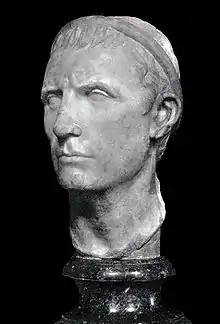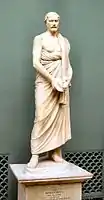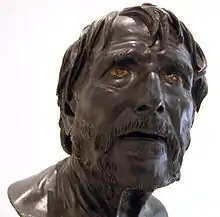Hellenistic portraiture
Hellenistic portraiture was one of the most innovative features of Hellenistic art. Spurred on by an increased interest in realism, Hellenistic sculptors sought to produce true-to-life portraits defined by the individualism of their subjects.[1] Emergent at this time is a focus on a range of states of mind such as inebriation and concentration, as well as physical characteristics like senescence and anatomical abnormality - in great contrast with the idealised forms of the Classical period[2][1]

Portrait of Antiochus III
Gallery
 Portrait of Demosthenes
Portrait of Demosthenes Pseudo-Seneca at Naples
Pseudo-Seneca at Naples
Notes
- Griffiths Pedley, John (1993). Greek Art & Archaeology. Laurence King. p. 350.
- Barringer, Judith M. (2014). The Art and Archaeology of Ancient Greece. Cambridge University Press. p. 342.
Bibliography
- (in Italian) Ranuccio Bianchi Bandinelli, Il problema del ritratto, in L'arte classica, Editori Riuniti, Rome 1984.
- (in Italian) Pierluigi De Vecchi and Elda Cerchiari, I tempi dell'arte, volume 1, Bompiani, Milano 1999.
This article is issued from Wikipedia. The text is licensed under Creative Commons - Attribution - Sharealike. Additional terms may apply for the media files.